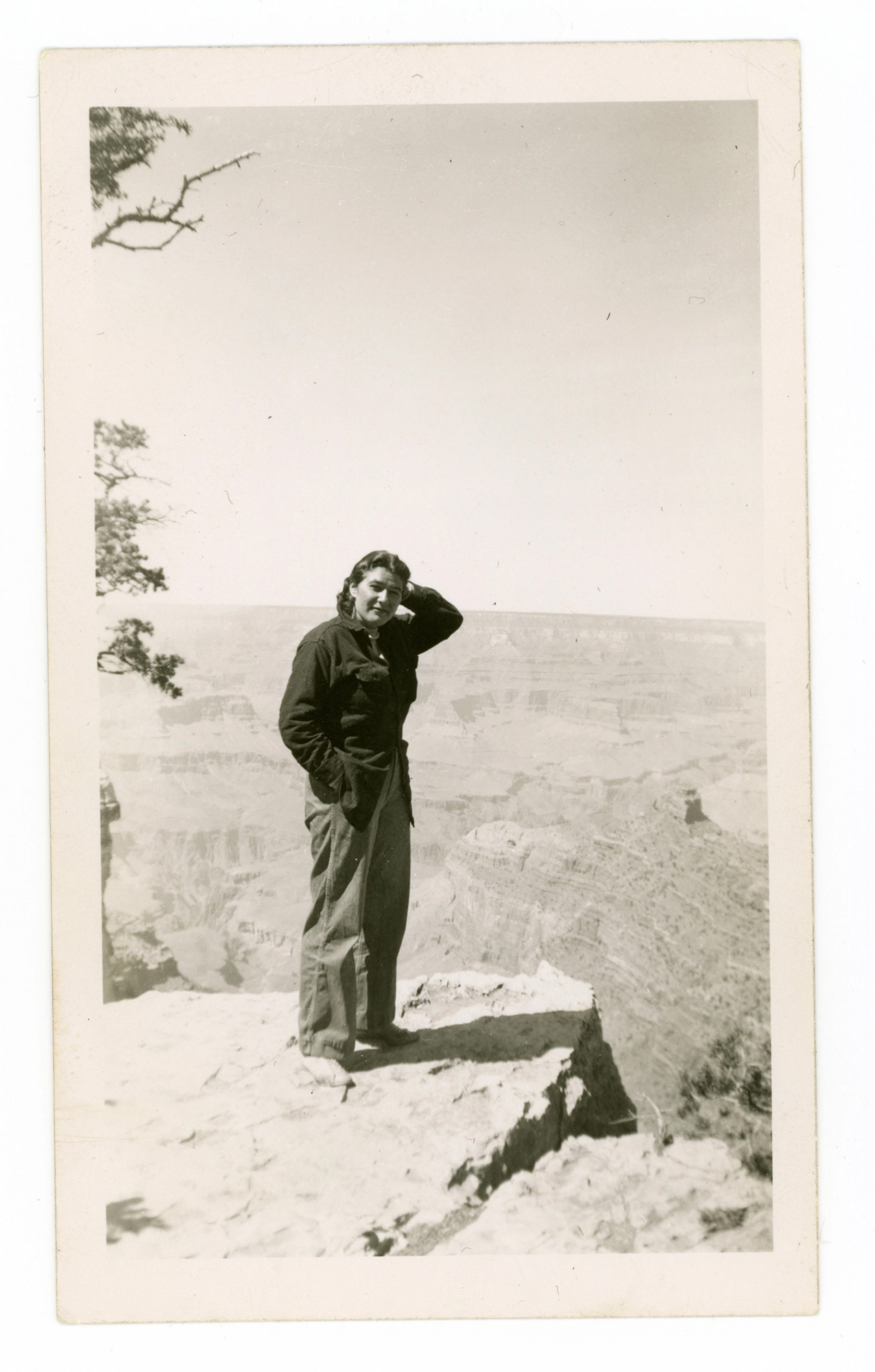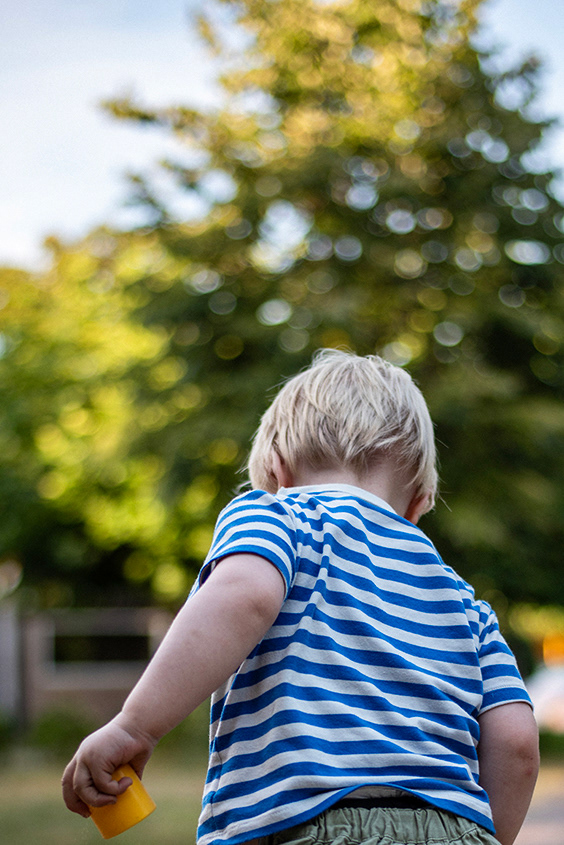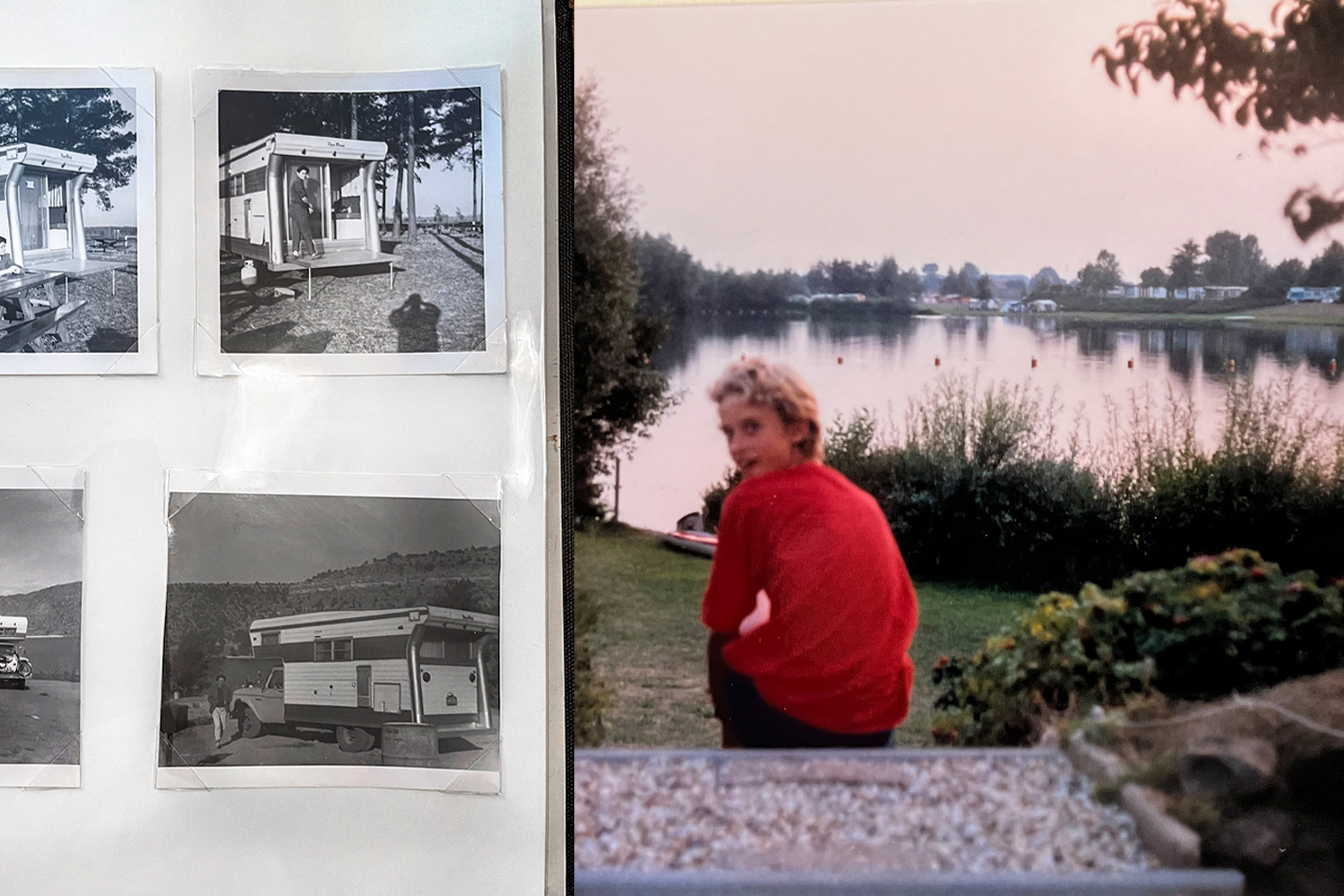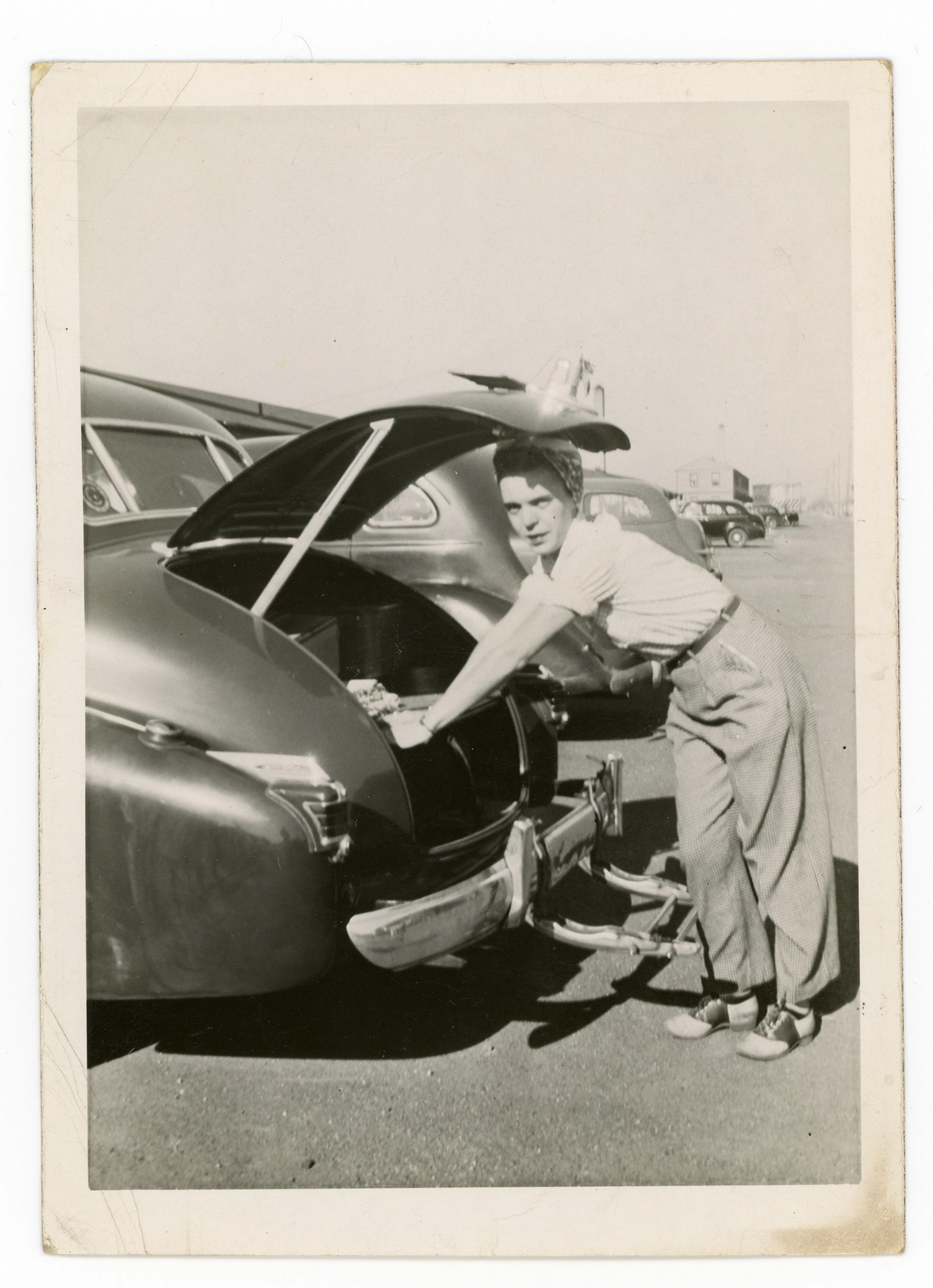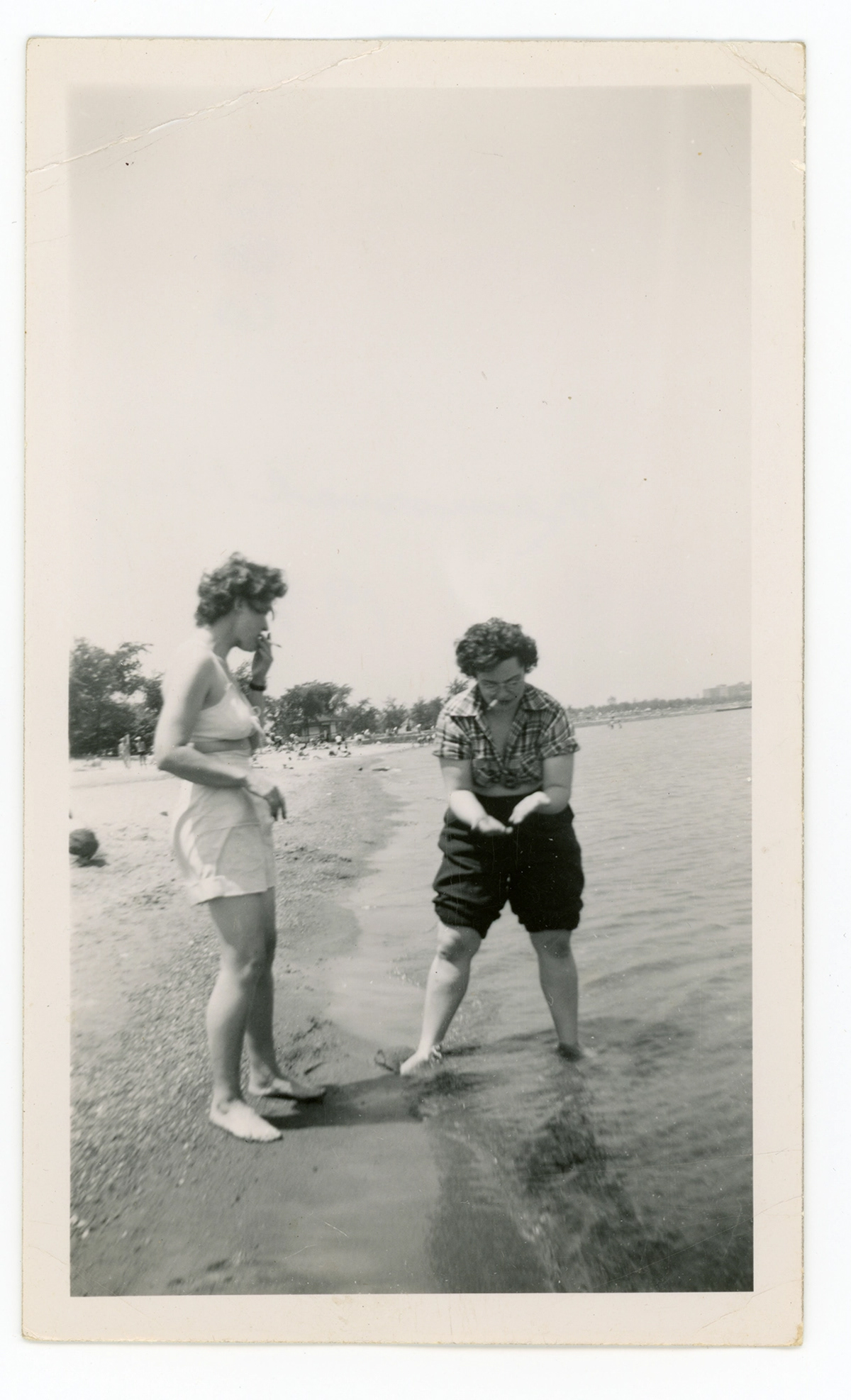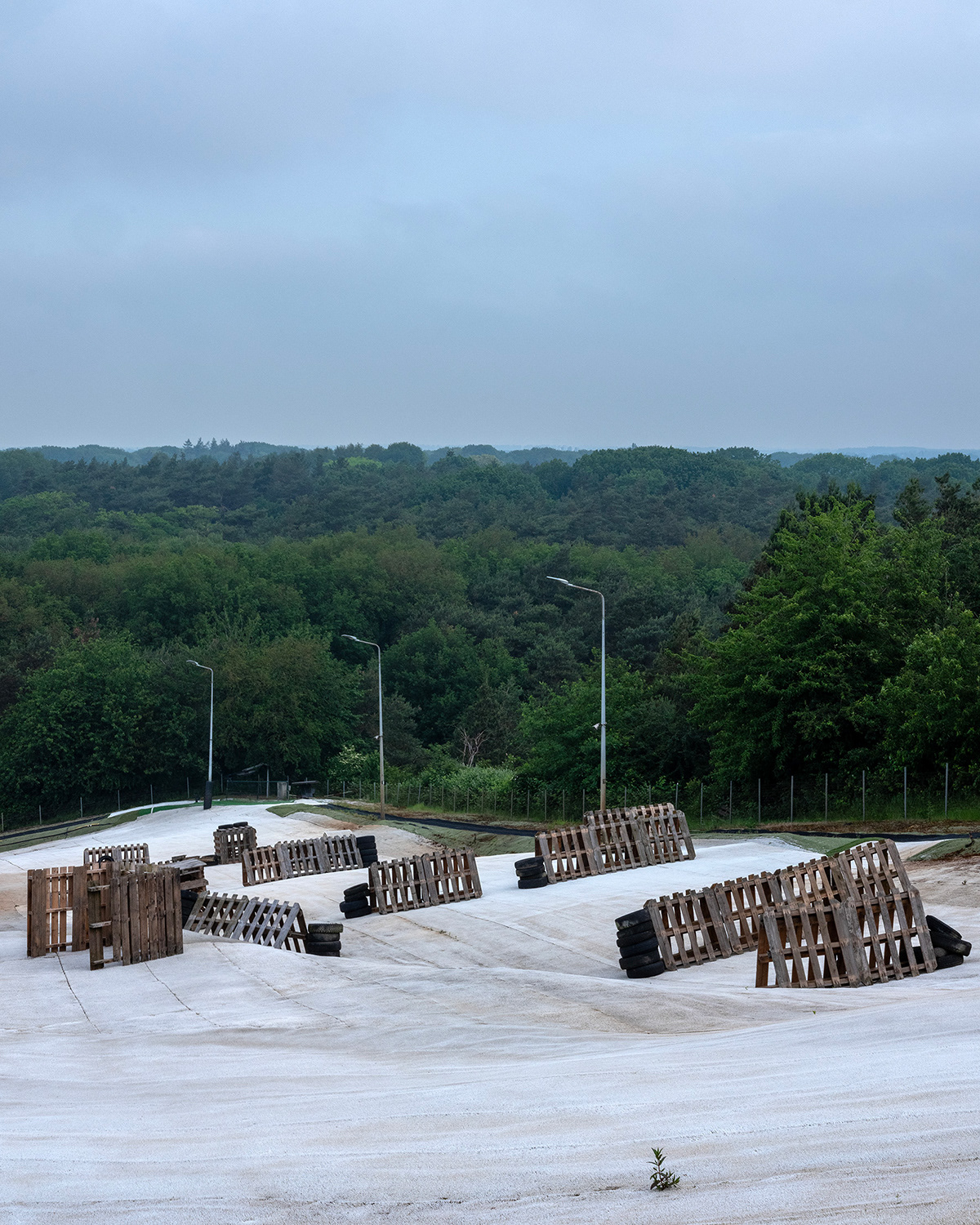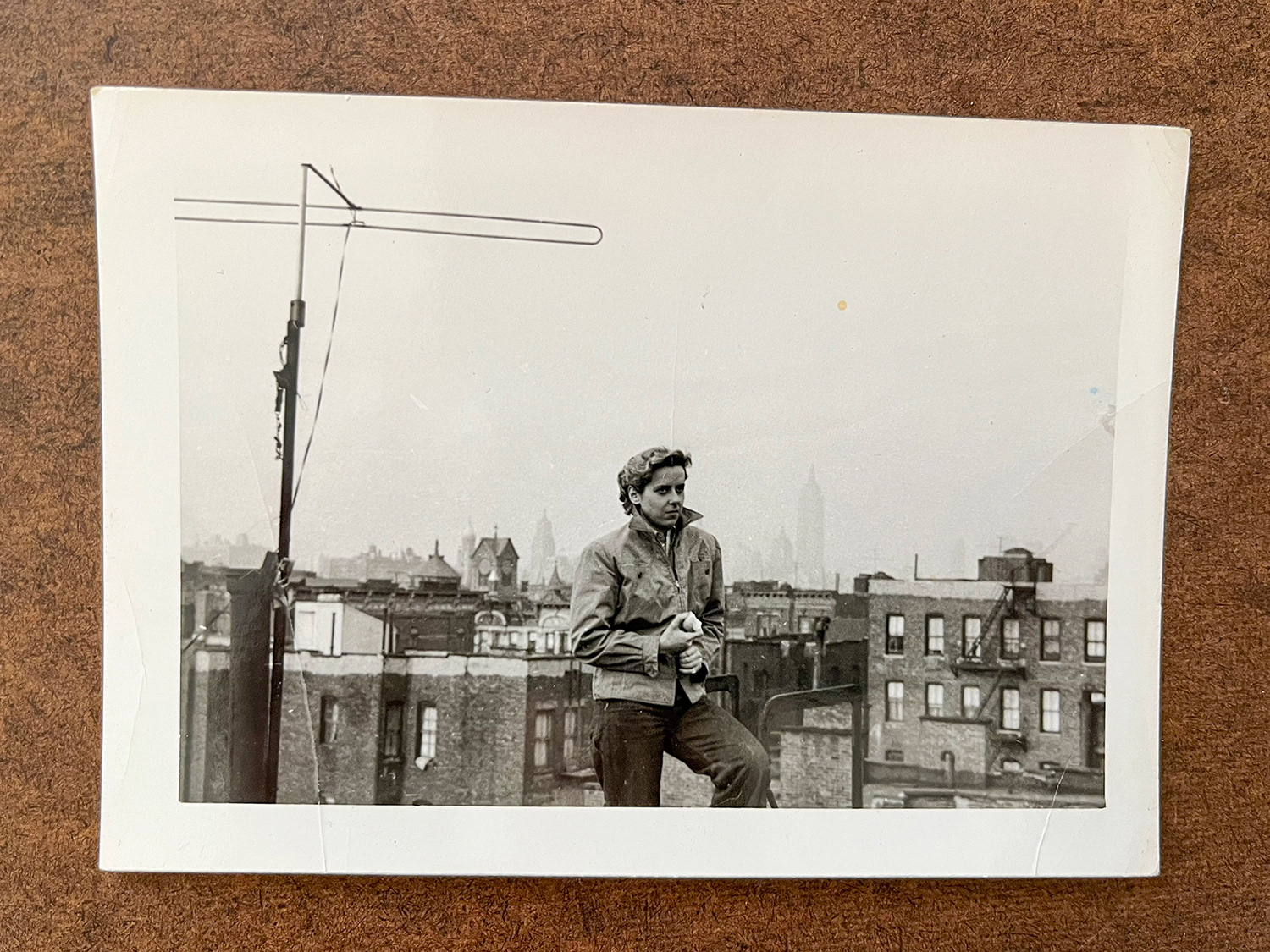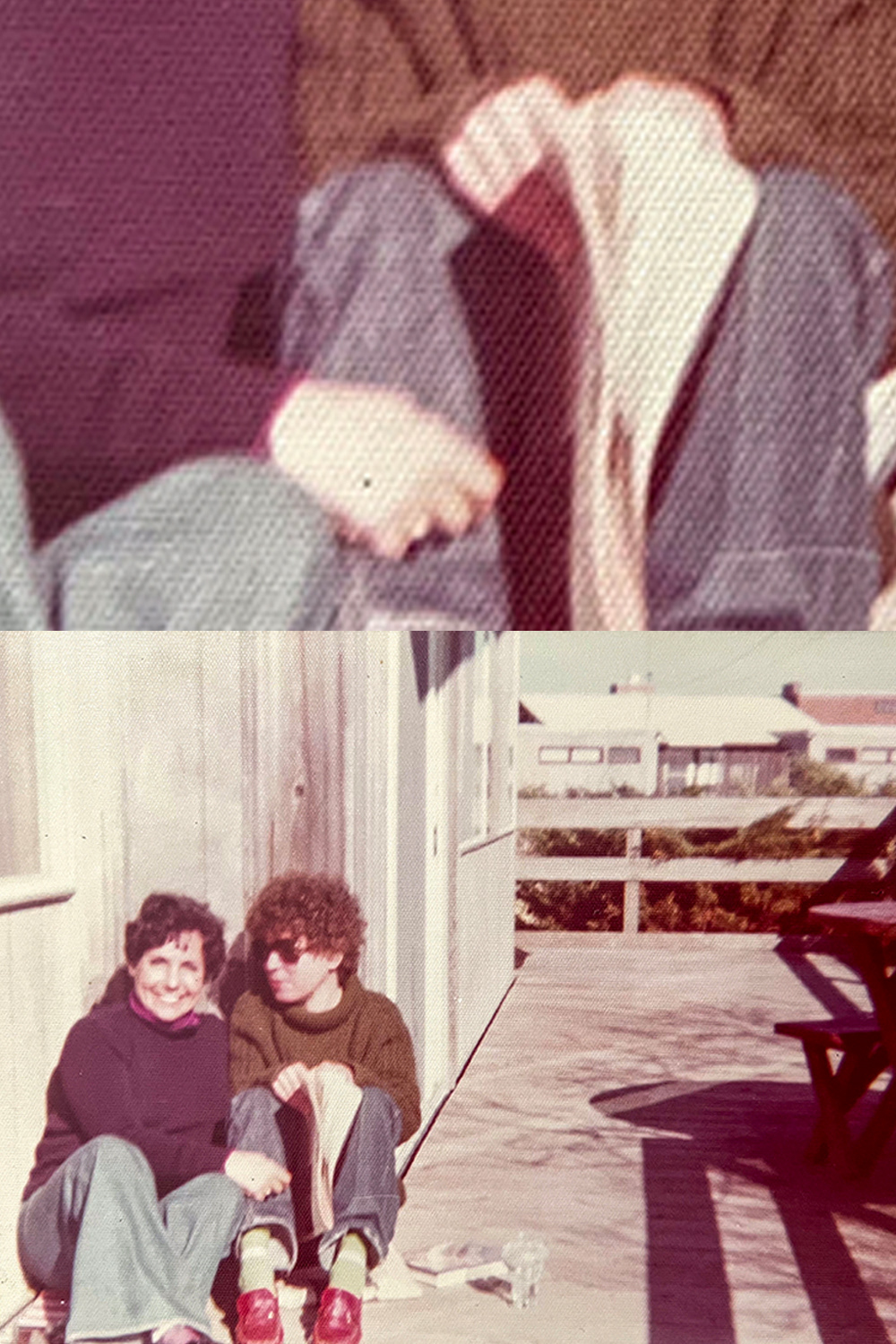This project began when we welcomed my son into our lives two years ago; a moment that redefined how I understand family, vulnerability, and the power of chosen communities.
The conflict I address is not one of nations, but one waged on bodies and identities — in the streets, in laws, and in language. At a time when hostility against trans and queer people grows louder, I see my work as an act of resistance through care.
I am drawn to photographs that reveal how these women moved through their daily lives and how they quietly reclaimed public space as a political arena. I encountered glimpses of everyday life, beyond the usual protest rallies and political meetings. It reveals hidden narratives of reclaiming public spaces in a less tolerant era. There is something I recognise in the photos of these lesbian women. A gesture, a posture or a glance. These personal moments echoed my own family’s photos.
Spending time with very rare private photo albums of lesbian women from the 1930s–1960s — women who lived their truths in public when visibility was dangerous — became a form of solace. Their photographs radiate tenderness and strength; they are reminders that love and resilience persist even in oppressive times.
The conflict I address is not one of nations, but one waged on bodies and identities — in the streets, in laws, and in language. At a time when hostility against trans and queer people grows louder, I see my work as an act of resistance through care.
I am drawn to photographs that reveal how these women moved through their daily lives and how they quietly reclaimed public space as a political arena. I encountered glimpses of everyday life, beyond the usual protest rallies and political meetings. It reveals hidden narratives of reclaiming public spaces in a less tolerant era. There is something I recognise in the photos of these lesbian women. A gesture, a posture or a glance. These personal moments echoed my own family’s photos.
Spending time with very rare private photo albums of lesbian women from the 1930s–1960s — women who lived their truths in public when visibility was dangerous — became a form of solace. Their photographs radiate tenderness and strength; they are reminders that love and resilience persist even in oppressive times.
After more than 30 years, my family and I are relocating to my hometown, a place that is rich with my past. This decision made me reflect on the places of significance in my youth. One location, in particular, stood out: the artificial skiing mountain.
I remember secretly stuffing my pockets with little round white plastic balls that enabled the skiers to slide effortless down the slope. I realised that if we can redesign nature, there is nothing we can’t do. That mountain symbolised the endless possibilities that the future held. Now, that same futuristic ski slope has become an environmental hazard. Repurposed from a former landfill, it is now polluting the groundwater with chemicals from dumped waste.
At the same time, I reflect on places that matter to me — both now and in my youth — exploring how landscapes hold memory and how meanings of place change over time.
This experience forms the foundation of my ongoing project: to build a new archive that connects personal stories with collective history. Through photography, I pair past and present to create intergenerational conversations between queer lives. From women in the past to me and my son, and to my chosen community - and to future audiences, this work seeks refuge in continuity: the quiet, enduring courage to live and love openly.
